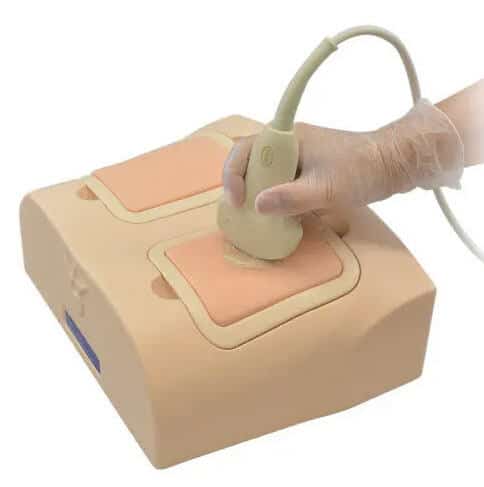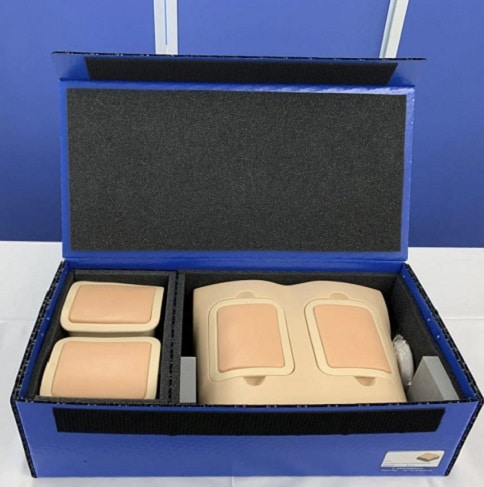With expertise stretching back more than 130 years, Kyoto Kagaku has a long history in the development of medical training products. The Japanese company is a leading producer of anatomical models, simulators and imaging phantoms. It recently launched an innovative lung ultrasound phantom to be used by trainees.
A company spokesperson explained:
“Our aim is to be a company that manufactures unique products. Therefore, our product development requires teamwork between specialists in a range of different fields.
This includes teams of modelists and materials specialists to shape the models and recreate specific textures. We also work with IT and electronics teams to set up and operate our simulators.”
He added:
“During development, we work with academic and medical institutions as well as some of the education facilities that will be using our products. This enables us to receive input from experts in medical education and share knowledge. This process has already resulted in the creation of many ground-breaking products.”
Realistic Practice Models
Kyoto Kagaku can be traced back to 1891 when the Shimadzu Corporation began manufacturing scientific specimens for education. In 1948, Kyoto Kagaku Co Ltd was launched to continue the work being done by Shimadzu Corporation’s specimens division.
“Educational content has evolved and medical technology has become more sophisticated. At the same time, we have been able to provide products that can be used by all healthcare providers.
This includes practice models that recreate the actual feel of the human body and the sensation of inserting a syringe. It also includes auscultation practice models that produce realistic heartbeat and breathing noises.
We also manufacture phantoms that produce the same images as a real body when undergoing X-rays or ultrasound.”
A Lung Ultrasound Training Phantom
Kyoto Kagaku is unique in the breadth of products it offers, according to the spokesperson.
“We produce training simulators and manikins for nursing schools, medical schools, postgraduate training and radiographers as well as sonographers. We offer a range of training items for skills that are commonly required for undergraduate medical students, nurses and nurse practitioners.”


The company’s range of anatomical phantoms works with real clinical equipment to provide quality opportunities for training and study.
Kyoto Kagaku recently launched ECHOLUNG, a new lung ultrasound phantom which trainees can scan with real ultrasound scanners. They can visualize key images of healthy lungs and lungs with disorders, such as pneumonia and pleural effusion. This comes in four different modules. All modules simulate accurate anatomies of ribs, pleura and lungs, each presenting different symptoms. The spokesperson explained:
“The phantom helps trainees acquire hand-eye coordination, use of the device and interpretation of visualized images.
Since the pandemic began, there have been restrictions in person-to-person contact. Training opportunities with real patients or actors pretending to be patients have had to be reduced. At the same time, healthcare professionals have had to acquire new skills in a much shorter length of time.
Our new, high-quality training phantom helps to cover the gap of training experience.”

Benefits to Trainees, Professionals and Patients
According to the Kyoto Kagaku spokesperson, simulators, phantoms and models have many benefits.
“They help establish a safe, hands-on training environment for trainees, trainers and patients. These years of pandemic have shed new light on the possibilities that quality training simulators provide for hands-on training.
The quality and reality of Kyoto Kagaku simulators support not only acquiring skills, but also developing confidence in trainees. They also help ensure the standardization of skills training and objective skills assessment.
Ultimately, they result in better and safer healthcare for the wider population.”











